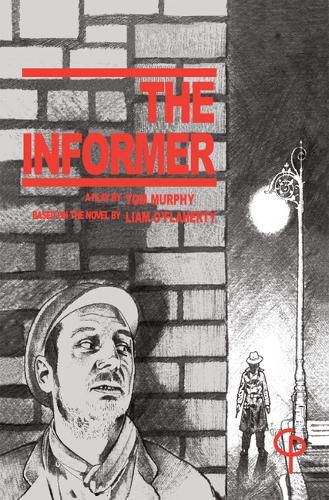Readings Newsletter
Become a Readings Member to make your shopping experience even easier.
Sign in or sign up for free!
You’re not far away from qualifying for FREE standard shipping within Australia
You’ve qualified for FREE standard shipping within Australia
The cart is loading…






The Informer, Tom Murphy’s stage adaptation of Liam O'Flaherty’s novel, was produced in the 1981 Dublin Theatre Festival, directed by the playwright himself, with Liam Neeson in the leading role.
The central subject of the play is the quest a character at the point of emotional and moral breakdown for some source of meaning or identity. In the case of Gypo Nolan, the informer of the title, this involves a nightmarish progress through a Dublin underworld in which he changes from a Judas figure to a scapegoat surrogate for Jesus, taking upon himself the sins of the world. A cinematic style, with flash-back and intercut scenes, is used rather than a conventional theatrical structure to catch the fevered and phantasmagoric progression of Gypo’s mind. The language, characteristically for Murphy, mixes graphically colloquial Dublin slang with the haunted inarticulateness of the central character groping for the meaning of his own actions. The dynamic rhythm of the action builds towards an inevitable but theatrically satisfying tragic catastrophe.
$9.00 standard shipping within Australia
FREE standard shipping within Australia for orders over $100.00
Express & International shipping calculated at checkout
The Informer, Tom Murphy’s stage adaptation of Liam O'Flaherty’s novel, was produced in the 1981 Dublin Theatre Festival, directed by the playwright himself, with Liam Neeson in the leading role.
The central subject of the play is the quest a character at the point of emotional and moral breakdown for some source of meaning or identity. In the case of Gypo Nolan, the informer of the title, this involves a nightmarish progress through a Dublin underworld in which he changes from a Judas figure to a scapegoat surrogate for Jesus, taking upon himself the sins of the world. A cinematic style, with flash-back and intercut scenes, is used rather than a conventional theatrical structure to catch the fevered and phantasmagoric progression of Gypo’s mind. The language, characteristically for Murphy, mixes graphically colloquial Dublin slang with the haunted inarticulateness of the central character groping for the meaning of his own actions. The dynamic rhythm of the action builds towards an inevitable but theatrically satisfying tragic catastrophe.